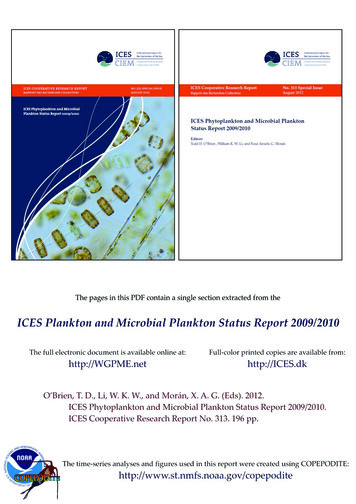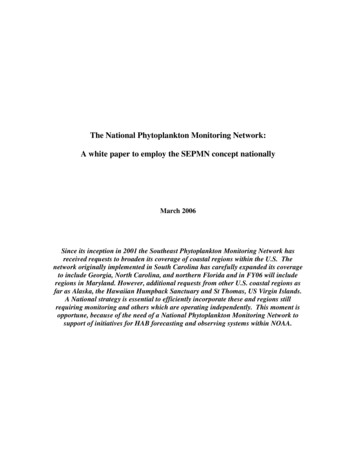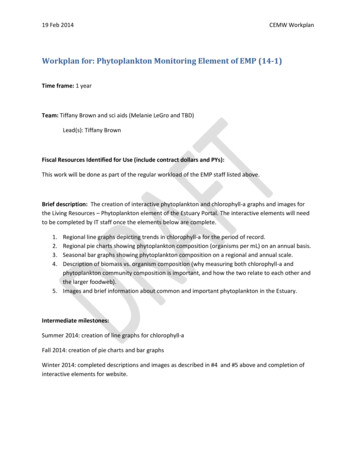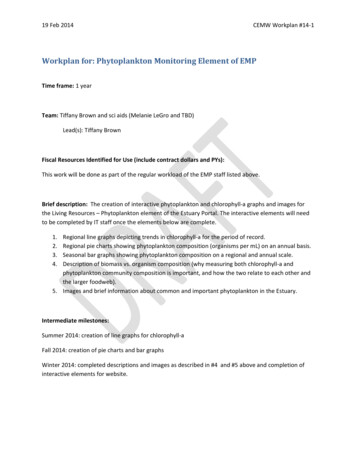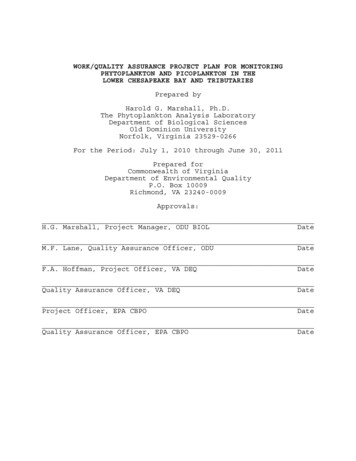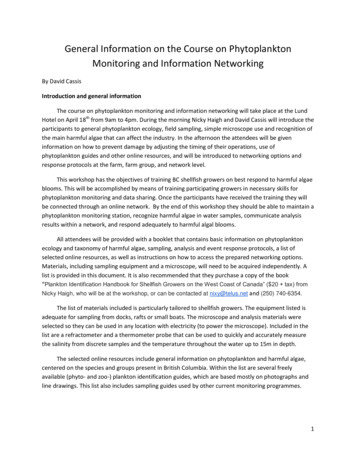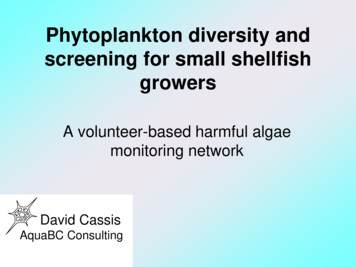
Transcription
Phytoplankton diversity andscreening for small shellfishgrowersA volunteer-based harmful algaemonitoring networkDavid CassisAquaBC Consulting
Diatoms good food (most of them)Images: Phyto’pedia
Dinoflagellates Some harmful Some toxic (PSP, DSP) Some nutritiousImages: Phyto’pedia
Other groups No cumulative toxins Mortalities (Heterosigma) Some can change quality(red oysters)Images: Phyto’pedia
Year cycle of the phytoplankton Populations andspecies varythroughout the year Similar pattern everyyearAlexandrium (PSP)HeterosigmaDinophysis (DSP)
Algal effects on shellfish Nutritive, main source of food Toxicity– (PSP, ASP, DSP)– New threats Mortalities Reduced growthClosuresDelayed harvestIncreased costsLoss of seedProduct lossReduced yieldIncreased costs
HAB monitoring Most systems based on toxin detection Phytoplankton monitoring:– Different degrees of technification and purposes West coast– Canada: HAMP (phytoplankton), CFIA (toxins)– AHAB, MOCHA, ORHAB– Several in Puget Sound
A 4-pronged plan1. Eyes on the ground:volunteer-industry phytoplanktonmonitoring network2. Actionable information:generate a path for theinformation so that it can becomeactionable in near/real time4. Optimization throughexchange: foster localexperts and exchanges withinternational sources ofexperience (USA, Chile, Spain,etc.)3. Enhanced response:cascade of actions once theinformation is received
Eyes on the ground Create and train local “actiongroups” Support through training,identification tools and expertadvice Connect these groups into anetwork through Internetbased toolsMap: BCSGA Objective is to check the phytoplankton oftenand raise a “yellow flag” if HAB is detected
Actionable informationA coherent flow ofinformation Create the links necessaryfrom the monitoring networkto government organizationsresponsibleA simple plan Institutions and general framework already inplace (BCSGA, EC, CFIA, DFO) Need training and expert advice
Enhanced responseA proportionalresponse to potentialthreats What to do once a “yellowflag” is identified? How to respond to andconfirm potential threats?
A proportional and informedresponse FIAQuantitativetestingDFOclosure
Optimization through exchangeImprovement ofnetwork, responseand training Foster exchanges and workshopswith local and international experts(USA, Chile, Spain) Increase collaboration ininternational forums (PICES,ISSHA) Formation of new local experts
HAB/phytoplankton monitoringCosts Basic frameworkalready in place Low cost Expertise alreadyexists in BCBenefits Advance notice on toxicevents ( new threats) Adds flexibility and bettercoverage to toxin monitoring Phytoplankton and HABseasonality– Plan for planting and harvest– Reduce seed mortality
“If you know your enemy and know yourself, youneed not fear the result of a hundred battles”Sun Tzu
volunteer-industry phytoplankton monitoring network . 3. Enhanced response: cascade of actions once the information is received . 2. Actionable information: generate a path for the information so that it can become actionable in near/real time . 4. Optimization through exchange: foster local experts and exchanges with international sources of
